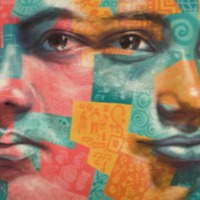
Deborah
There is an estimated 48,000 people living in modern slavery in Libya (GSI 2018). Libya is a major transit destination for migrants and refugees hoping to reach Europe by sea. Human trafficking networks have prospered amid lawlessness, created by the warring militias that have been fighting for control of territories since the toppling of Muammar Gaddafi in 2011. Highly organized trafficking and migrants smuggling networks that reach into Libya from Niger, Nigeria, Chad, Eritrea, Ethiopia, Somalia, Sudan, and other sub-Saharan states subject migrants to forced labor and forced prostitution through fraudulent recruitment, confiscation of identity and travel documents, withholding or non-payment of wages, debt bondage, and verbal, physical, and sexual abuse. In some cases, migrants reportedly pay smuggling fees to reach Tripoli, but once they cross the Libyan border they are sometimes abandoned in southern cities or the desert where they are susceptible to severe forms of abuse and human trafficking. Deborah left her home in Nigeria because her stepmother treated her badly. She wanted to become a fashion designer and when she met a man who promised to take her to Europe, she gladly accepted. It was a big surprise to her when after arriving in Libya, she was told that the journey stopped there, and she had to start working as a prostitute.
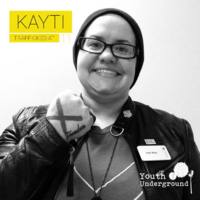
Kayti
There are an estimated 403,000 people living in modern slavery in the United States (GSI 2018). Sex trafficking exists throughout the country. Traffickers use violence, threats, lies, debt bondage and other forms of coercion to compel adults and children to engage in commercial sex acts against their will. The situations that sex trafficking victims face vary, many victims become romantically involved with someone who then forces them into prostitution. Others are lured with false promises of a job, and some are forced to sell sex by members of their own families. Victims of sex trafficking include both foreign nationals and US citizens, with women making up the majority of those trafficked for the purposes of commercial sexual exploitation. In 2015, the most reported venues/industries for sex trafficking included commercial-front brothels, hotel/motel-based trafficking, online advertisements with unknown locations, residential brothels, and street-based sex trafficking. Kayti was trafficked at 11 in the United States. She had experienced sexual abuse at home since the age of two and later, her father took her to a house where she was subjected to child commercial sexual exploitation. Kayti’s exploitation continued until she was twenty-eight years old at which point, she reached out for help.
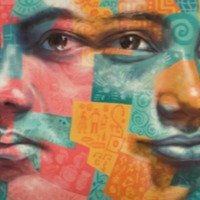
Bianca
There are an estimated 403,000 people living in modern slavery in the United States (GSI 2018). Sex trafficking exists throughout the country. Traffickers use violence, threats, lies, debt bondage and other forms of coercion to compel adults and children to engage in commercial sex acts against their will. The situations that sex trafficking victims face vary, many victims become romantically involved with someone who then forces them into prostitution. Others are lured with false promises of a job, and some are forced to sell sex by members of their own families. Victims of sex trafficking include both foreign nationals and US citizens, with women making up the majority of those trafficked for the purposes of commercial sexual exploitation. In 2015, the most reported venues/industries for sex trafficking included commercial-front brothels, hotel/motel-based trafficking, online advertisements with unknown locations, residential brothels, and street-based sex trafficking. Bianca began speaking to a man she had met online and when she turned sixteen, she left home and travelled to see him. She went to Vegas where the man trafficked her into prostitution. He threatened to kill anyone that tried to take her home and forced Bianca to start taking drugs. She was finally able to leave and later heard that he had been arrested.
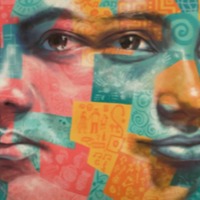
Thanh
The Global Slavery Index 2018 estimates that on any given day in 2016, an estimated 3.6 million men, women and chidlren were living in modern slavery in Europe and Central Asia (GSI 2018). People are subjected to exploitation in forced labour, debt bondage and forced sexual exploitation. Government response in Europe is particularly strong with a number of regional bodies holding them account and monitoring responses, and while countries in Central Asia have taken steps to tack modern slavery, more needs to be done. First trafficked at the age of five with her parents out of Vietnam into China, she and her family were promised a better life. At the age of 15, Thanh had to sleep with so many men it left her with permanent damage to her spine. She was trafficked to Russia to pick fruit, across a continent to France for sex work in a forest encampment: separated from her 11-year-old son and thrown into a refrigerated lorry to be smuggled to England. In London, she was taken to a basement for sex work and labour packing vegetables. One day she seized an opportunity to flee barefoot. Undocumented, Thanh was afraid to go to the police and only received help after a lump in her breast made her go to a doctor. Eventually she was recognised as a victim of modern slavery and with the help of the British Red Cross was reunited with her son.
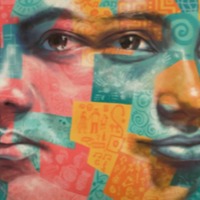
Grizelda
There are an estimated 155,000 people living in modern slavery in South Africa (GSI 2018). South Africa remains a source, transit and destination country for men, women and children subjected to forced labour and sex trafficking. South African children were recruited from poor, rural areas to urban centres, such as Johannesburg, Cape Town, Durban, and Bloemfontein, where girls were subjected to sex trafficking and domestic servitude and boys are forced to work in street vending, food service, begging, criminal activities, and agriculture. Local criminal rings organized child sex trafficking, Russian and Bulgarian crime syndicates facilitated trafficking within the Cape Town commercial sex industry, and Thai and Chinese nationals often organized the sex trafficking of Asian men and women. Nigerian syndicates dominated the commercial sex industry in several provinces. To a lesser extent, syndicates recruited South African women to Europe and Asia, where some are forced into prostitution, domestic servitude, or drug smuggling. Grizelda Grootboom was 18 years old when a trip to Johannesburg with a friend ended in her being trafficked in Yeoville. She was tied up in a room for two weeks and forced to work as a prostitute. Grizelda now works for Embrace Dignity, advocating to prevent violence against women, commercial and sexual exploitation and human trafficking.

Wendy
There are an estimated 403,000 people living in modern slavery in the United States (GSI 2018). Sex trafficking exists throughout the country. Traffickers use violence, threats, lies, debt bondage and other forms of coercion to compel adults and children to engage in commercial sex acts against their will. The situations that sex trafficking victims face vary, many victims become romantically involved with someone who then forces them into prostitution. Others are lured with false promises of a job, and some are forced to sell sex by members of their own families. Victims of sex trafficking include both foreign nationals and US citizens, with women making up the majority of those trafficked for the purposes of commercial sexual exploitation. In 2015, the most reported venues/industries for sex trafficking included commercial-front brothels, hotel/motel-based trafficking, online advertisements with unknown locations, residential brothels, and street-based sex trafficking. Wendy Barnes was trafficked from the age of 15 across the US West Coast for nearly 15 years, from the mid 1980s until 2000. Her trafficker, Gregory Leon Hightower, was eventually arrested and sentenced to life in prison in Oregon. Wendy now lives in Southern California and works full time as a customer service representative. Her narrative is from an interview with Francine Sporenda for the Révolution Féministe website, originally published in French and then in English by Nordic Model Now!, a UK secular, feminist, grassroots women’s group campaigning for the abolition of prostitution and related practices. Wendy has published a book about her experiences titled And Life Continues: Sex Trafficking and My Journey to Freedom (2015).
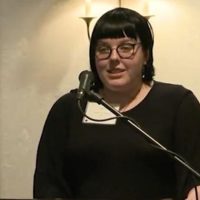
Kylee
There are an estimated 403,000 people living in modern slavery in the United States (GSI 2018). Sex trafficking exists throughout the country. Traffickers use violence, threats, lies, debt bondage and other forms of coercion to compel adults and children to engage in commercial sex acts against their will. The situations that sex trafficking victims face vary, many victims become romantically involved with someone who then forces them into prostitution. Others are lured with false promises of a job, and some are forced to sell sex by members of their own families. Victims of sex trafficking include both foreign nationals and US citizens, with women making up the majority of those trafficked for the purposes of commercial sexual exploitation. In 2015, the most reported venues/industries for sex trafficking included commercial-front brothels, hotel/motel-based trafficking, online advertisements with unknown locations, residential brothels, and street-based sex trafficking. Kylee Gregg was trafficked in rural Ohio from the age of 10 until she was 14, beginning in 2010. She told her story at the age of 18, as a college student, during an interview with Francine Sporenda for the Révolution Féministe website. It was originally published in French and then in English by Nordic Model Now!, a UK secular, feminist, grassroots women’s group campaigning for the abolition of prostitution and related practices. Kylee identifies as a lesbian radical feminist and runs an activist organisation called Womyn Unleashed.
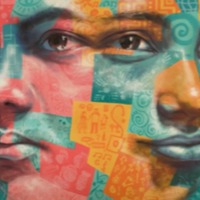
Udumeule
There are an estimated 1,386,000 people living in modern slavery in Nigeria (GSI 2018). Since 2009, Nigeria’s homegrown Islamist insurgent movement, Jama’atu Ahlis Sunna Lidda’awati wal-Jihad, popularly known as Boko Haram, which means “Western Education is Forbidden,” has waged a violent campaign against the Nigerian government in its bid to impose Islamic law. The attacks have increasingly targeted civilians, mainly in the northeastern states of Borno, Yobe, and Adamawa. Borno State, the birthplace of Boko Haram, has suffered the highest number of attacks. A range of issues, including widespread poverty, corruption, security force abuse, and longstanding impunity for a range of crimes have created fertile ground in Nigeria for militant armed groups like Boko Haram. In some cases, women and children are abducted from predominantly Christian areas and forced to convert to Islam. Where forced conversion did not lead to the release of abductees, it usually led to forced marriage to members of Boko Haram. Udumeule* was 15-years-old when she gave the narrative.
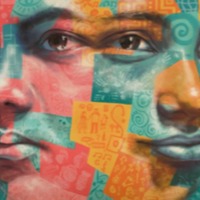
Anwuli
There are an estimated 1,386,000 people living in modern slavery in Nigeria (GSI 2018). Since 2009, Nigeria’s homegrown Islamist insurgent movement, Jama’atu Ahlis Sunna Lidda’awati wal-Jihad, popularly known as Boko Haram, which means “Western Education is Forbidden,” has waged a violent campaign against the Nigerian government in its bid to impose Islamic law. The attacks have increasingly targeted civilians, mainly in the northeastern states of Borno, Yobe, and Adamawa. Borno State, the birthplace of Boko Haram, has suffered the highest number of attacks. A range of issues, including widespread poverty, corruption, security force abuse, and longstanding impunity for a range of crimes have created fertile ground in Nigeria for militant armed groups like Boko Haram.In some cases, women and children are abducted from predominantly Christian areas and forced to convert to Islam. These abductions took place most often in Boko Haram’s then-strongholds of Maiduguri, the Borno State capital, or Damaturu, the capital of neighboring Yobe State. In most of the documented cases, married women were abducted as punishment for not supporting the group’s ideology, while unmarried women and girls were taken as brides after insurgents hastily offered a dowry to the families, who feared to resist. 19-year-old Anwuli* and one other woman were raped after having been abducted with four other women in April 2014.
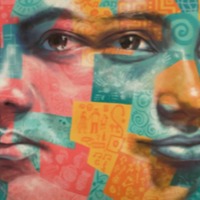
Ifunanya
There are an estimated 1,386,000 people living in modern slavery in Nigeria (GSI 2018). Since 2009, Nigeria’s homegrown Islamist insurgent movement, Jama’atu Ahlis Sunna Lidda’awati wal-Jihad, popularly known as Boko Haram, which means “Western Education is Forbidden,” has waged a violent campaign against the Nigerian government in its bid to impose Islamic law. The attacks have increasingly targeted civilians, mainly in the northeastern states of Borno, Yobe, and Adamawa. Borno State, the birthplace of Boko Haram, has suffered the highest number of attacks. A range of issues, including widespread poverty, corruption, security force abuse, and longstanding impunity for a range of crimes have created fertile ground in Nigeria for militant armed groups like Boko Haram.In some cases, women and children are abducted from predominantly Christian areas and forced to convert to Islam. These abductions took place most often in Boko Haram’s then-strongholds of Maiduguri, the Borno State capital, or Damaturu, the capital of neighboring Yobe State. In most of the documented cases, married women were abducted as punishment for not supporting the group’s ideology, while unmarried women and girls were taken as brides after insurgents hastily offered a dowry to the families, who feared to resist. Ifunanya* was abducted in 2013 and spent four weeks with Boko Haram.
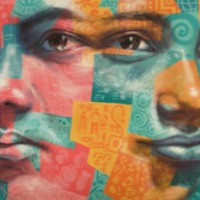
Yejide
There are an estimated 1,386,000 people living in modern slavery in Nigeria (GSI 2018). Since 2009, Nigeria’s homegrown Islamist insurgent movement, Jama’atu Ahlis Sunna Lidda’awati wal-Jihad, popularly known as Boko Haram, which means “Western Education is Forbidden,” has waged a violent campaign against the Nigerian government in its bid to impose Islamic law. The attacks have increasingly targeted civilians, mainly in the northeastern states of Borno, Yobe, and Adamawa. Borno State, the birthplace of Boko Haram, has suffered the highest number of attacks. A range of issues, including widespread poverty, corruption, security force abuse, and longstanding impunity for a range of crimes have created fertile ground in Nigeria for militant armed groups like Boko Haram.In some cases, women and children are abducted from predominantly Christian areas and forced to convert to Islam. These abductions took place most often in Boko Haram’s then-strongholds of Maiduguri, the Borno State capital, or Damaturu, the capital of neighboring Yobe State. In most of the documented cases, married women were abducted as punishment for not supporting the group’s ideology, while unmarried women and girls were taken as brides after insurgents hastily offered a dowry to the families, who feared to resist. 18-year-old Yejide* was not yet married when a Boko Haram combatant sexually abused her when she went to use the bathroom.
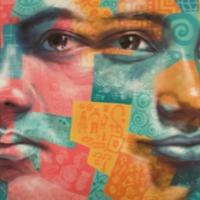
Elsa B
The Global Slavery Index 2018 estimates than there are 749,000 people living in conditions of modern slavery in Afghanistan. Women and children are subjected to sex trafficking within the country and those who pay intermediaries to assist in finding employment, either in Afghanistan or primarily in Iran, Pakistan, India, Europe or North America are forced in to prostitution. Boys are particularly vulnerable to sex trafficking for bacha bazi— a cultural practice in which men exploit boys for social and sexual entertainment, and those travelling unaccompanied are often trafficked from Afghanistan to Greece for sexual exploitation. Elsa was around 14 when she ran away from home to escape forced marriage. However, the person who she thought was helping her raped her, sold her to a broker and Elsa was then forced in to prostitution.
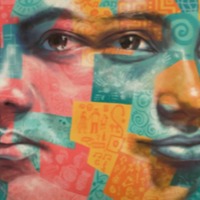
Anna C
There are an estimated 136,000 people living on conditions of modern slavery un the United Kingdom (Global Slavery Index 2018). According to the 2017 annual figures provided by the National Crime Agency, 5, 145 potential victims of modern slavery were referred through the National Referral Mechanism in 2017, of whom 2,454 were female, 2688 were male and 3 were transgender, with 41% of all referrals being children at the time of exploitation. People are subjected to slavery in the UK in the form of domestic servitude, labour exploitation, organ harvesting and sexual exploitation, with the largest number of potential victims originating from Albania, China, Vietnam and Nigeria. This data however does not consider the unknown numbers of victims that are not reported. Anna was living in Albania when she ran away with her boyfriend to escape an arranged marriage. She travelled to Kosovo where she thought she would build a life with the man she loved. However, instead Anna was forced in to a room, locked up and was repeatedly raped by up to ten men a day. Anna was moved from place to place, never knowing where she was. She was finally able to escape while in England and was referred to Hestia.
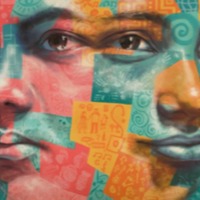
Promise
There are an estimated 136,000 people living on conditions of modern slavery un the United Kingdom (Global Slavery Index 2018). According to the 2017 annual figures provided by the National Crime Agency, 5, 145 potential victims of modern slavery were referred through the National Referral Mechanism in 2017, of whom 2,454 were female, 2688 were male and 3 were transgender, with 41% of all referrals being children at the time of exploitation. People are subjected to slavery in the UK in the form of domestic servitude, labour exploitation, organ harvesting and sexual exploitation, with the largest number of potential victims originating from Albania, China, Vietnam and Nigeria. This data however does not consider the unknown numbers of victims that are not reported. Promise grew up in Nigeria. When she was 17 years old, she was caught having sexual relations with another girl. She, along with her partner, were dragged outside and beaten. Her partner did not survive. After two days a friend helped her escape and she ran to her aunt’s house for help. Promise was told to meet a family friend in Port Harcourt. She was flown to the UK and upon arrival was stopped and held by immigration. As she was underage she was placed in foster care. However, Promise ran away to meet the man her aunt had told her would be able to help her achieve her dream of becoming a footballer. However Promise had no idea that her aunt had sold her into prostitution.
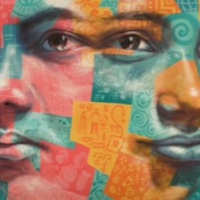
Benita Furaha
There are an estimated 1,045,000 people living in conditions of modern slavery in the Democratic Republic of Congo (GSI 2018). Worsening political and economic conditions throughout the country have exacerbated already high levels of instability, insecurity, and political tension and rendered populations more vulnerable to trafficking. Some men, women, and children working in artisanal mines in eastern DRC are subjected to forced labor, including debt bondage, by mining bosses, other miners, family members, government officials, and armed groups. Some children are subjected to forced labor in the illegal mining of diamonds, copper, gold, cobalt, tungsten ore, tantalum ore, and tin, as well as the smuggling of minerals. Benita’s parents died when she was 13 years old. Her older brother threatened to starve her or to send her out of the house if she couldn’t contribute to household expenses. Benita went to work in the mines where she was subjected to long hours for little pay and subjected to sexual violence. In 2012 Benita met community workers from Free the Slaves who helped her leave her situation. She has now mastered dress making skills and become a good seamstress that enables her to make an honest living
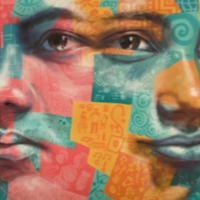
Gilberto
Brazil is a source country for men and boys trafficked internally for forced labor which accounts for most instances of modern slavery in Brazil. It is particularly prevalent in manual labour sectors such as construction, manufacturing, factory and domestic work and occurs in rural and urban areas, mainly through debt bondage schemes. In rural areas workers are immobilised in estates until they can pay off debts often fraudulently incurred; their identity documents and work permits are frequently retained; they are often physically threatened and punished by armed guards and some have been killed while attempting to flee. Debt bondage involves abusive labour contracting schemes operated by contractors known locally as empreiteiros or gatos, often engaged in other types of seasonal labour contracts. Gilberto went looking for work when he was recruited to work in a forest cutting trees. Forced to work long hours with little food and pay, Gilberto tried to leave his situation but was told by the gato that recruited him that he owed him money for the tools, food and transport and had to pay off his debt before he could leave. After five months of malnutrition and witnessing the sexual abuse of young boys, Gilberto ran away.
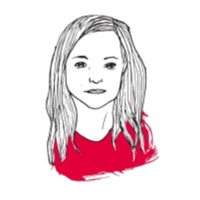
Anna B
The UK National Crime Agency estimates 3,309 potential victims of human trafficking came into contact with the State or an NGO in 2014. The latest government statistics derived from the UK National Referral Mechanism in 2014 reveal 2,340 potential victims of trafficking from 96 countries of origin, of whom 61 percent were female and 29 percent were children. Of those identified through the NRM, the majority were adults classified as victims of sexual exploitation followed by adults exploited in the domestic service sector and other types of labour exploitation. The largest proportion of victims was from Albania, followed by Nigeria, Vietnam, Romania and Slovakia. Anna was out with friends in Hungary when she was offered a job at a restaurant in Northern Ireland. Ready for a fresh start Anna travelled to Belfast where she was taken to a flat. However, after a few days Anna’s passport was taken and she was forced to work as a prostitute. Moved every couple of weeks Anna was afraid to escape as her trafficker had threatened the lives of her family if she did.
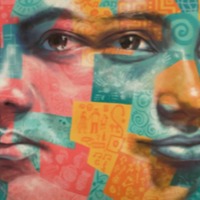
Arti L.
The United Arab Emirates is a destination for men and women predominantly from South and Southeast Asia, trafficked for the purposes of labour and commercial sexual exploitation. Migrant workers make up over 90 per cent of the UAE’s private sector workforce and are recruited from India, Bangladesh, Pakistan, Nepal, Sri Lanka, Indonesia, Ethiopia, Eritrea, China, and the Philippines. Though some travel willingly, they are subjected to conditions of modern slavery including withholding of passports, non-payment of wages, restrictions of movement and threats of physical and sexual abuse. Trafficking of domestic workers is facilitated by the fact that normal protections for workers under UAE labour laws do not apply to domestic workers, leaving them more vulnerable to abuse. Arti L. travelled from Indonesia and gained work as a domestic worker in the United Arab Emirates. Arti L. was subjected to physical and sexual abuse frequently and was raped by her male employer in July 2013 when he took her to clean a second house he had purchased. Arti L. managed to escape several days after this incident and attempted to file charges against her employer.
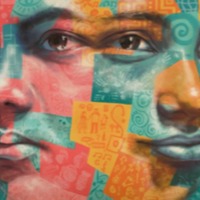
Ope
There are an estimated 11,700 people living in modern slavery in the United Kingdom. It remains a destination for men, women and children from countries across the world including Asia, Africa and Eastern Europe, often seeking opportunities for a better livelihood. The latest government statistics derived from the UK National Referral Mechanism in 2014 reveal 2,340 potential victims of trafficking from 96 countries of origin, of whom 61 percent were female and 29 percent were children. Of those identified through the NRM, the majority were adults classified as victims of sexual exploitation followed by adults exploited in the domestic service sector and other types of labour exploitation. The largest proportion of victims was from Albania, followed by Nigeria, Vietnam, Romania and Slovakia. In 2005 Ope met a man offering to help her leave her life in Nigeria and find employment and a better life abroad. Promised work as a nanny or in a factory, Ope was taken by boat to Tenerife and then flown to mainland Spain where her trafficker was waiting for her at the airport. It was then that she found out she had been trafficked in to prostitution. After being physically and sexually abused in Spain, Ope was later trafficked again to the UK where the abuse continued. Ope was finally able to escape one day when she used money and ID from a wallet found at a market to get a bus to Kings Cross station in London.

Siti
Foreign workers constitute more than 20 percent of the Malaysian workforce and typically migrate voluntarily—often illegally—to Malaysia from Bangladesh, India, Nepal, Burma, Indonesia, the Philippines, and other Southeast Asian countries, mostly in pursuit of better economic opportunities. Some of these migrants are subjected to forced labour or debt bondage by their employers, employment agents, or informal labour recruiters when they are unable to pay the fees for recruitment and associated travel. Siti was 14 years old when her last remaining relative passed away and she needed to earn money. She was approached by a woman who told her she could get her factory work in Malaysia. However, upon arrival in Malaysia Siti was forced to work long hours in various homes doing domestic work. In the five years she was enslaved, Siti did not earn any money and was subjected to physical and sexual abuse. Following a tip off, Siti was finally rescued during a raid operation.